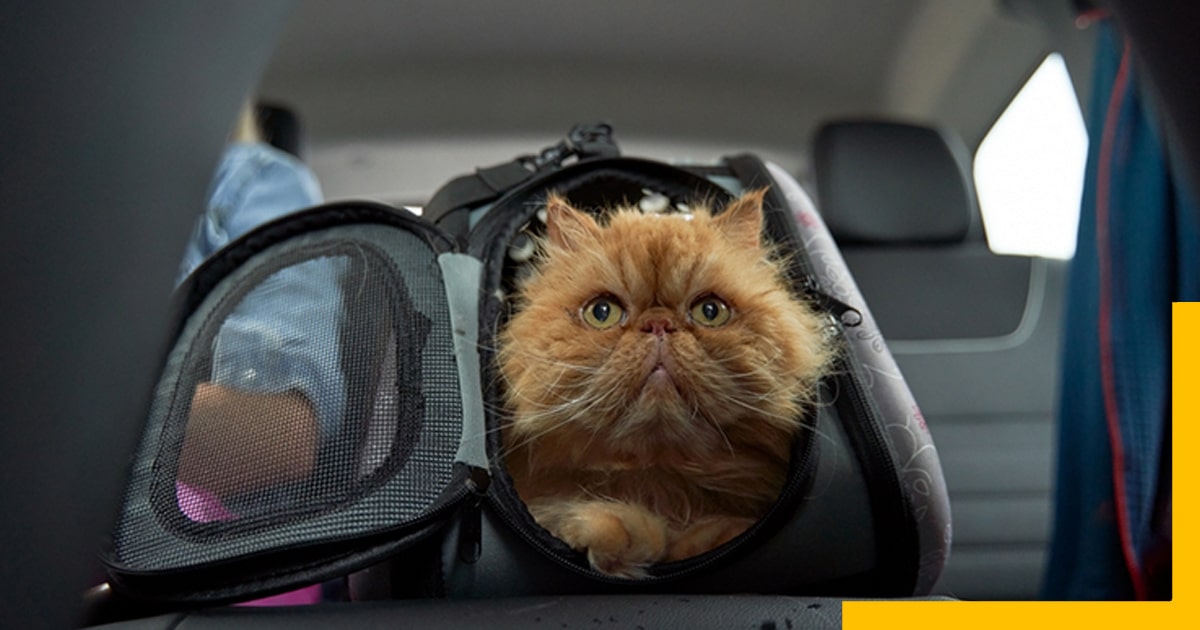15 Best Tips on How to Travel Long Distances with a Cat with MyTrekTopia
If you plan to take your cat with you on your trip, remember that it can be fun and challenging. Whether planning an international road trip or shifting to a new home, knowing how to travel long distances with a cat is important for a safe and stress-free experience.
In this comprehensive guide, we have handpicked some pro tips for everything you need to know about traveling long distances with cats. From preparing your cat for the journey to providing comfort and safety, this guide caters to all.
RELATED:
Contents
- 1 Prepare The Carrier While Driving Long Distances With a Cat
- 2 Keeping Your Cat Comfortable in The Car is Important
- 3 How to Travel Long Distances With a Cat Emphasizes Their Security
- 4 Plan Regular Breaks During Long Car Ride with the Cat
- 5 Comfortable Travel is a Deal Breaker
- 6 Cat’s Road Trip Demands Constant Observance
- 7 Cat Treats, Food, and Hydration are Necessary
- 8 Stay Patient and Calm
- 9 Avoid Extreme Temperature
- 10 Research for Rules and Regulations
- 11 Prepare a Travel Kit
- 12 Visit the Vet Before your Travel
- 13 Keep Identification Easily Accessible
- 14 Practice Patience and Tolerance
- 15 Celebrate When You Reach Your Destination
- 16 How to Travel Long Distances With a Cat Made Easy
- 17 FAQs
Prepare The Carrier While Driving Long Distances With a Cat

The first and foremost important tip is to provide your cat with a comfortable environment. For this reason, choose a strong, airy carrier for your cat. Line it with absorbent bedding and familiar items like toys or blankets to provide a homely feel to your cat during the journey.
Keeping Your Cat Comfortable in The Car is Important

The carrier you have decided to take your cat in while traveling, leave it open in your home for several days before the trip. Doing so is because your cat might only accept a new environment slowly. Thus, it is important to encourage your cat to explore and spend time in the carrier to reduce discomfort during travel.
How to Travel Long Distances With a Cat Emphasizes Their Security
Holding it in place with a seatbelt or other restraints is important to secure the carrier in your vehicle. This measure will prevent the carrier from shifting during sudden stops or turns and ensure that your cat stays safe during the travel.
Plan Regular Breaks During Long Car Ride with the Cat
While traveling, after some time, plan regular rest stops to allow your cat to stretch its legs, use the litter box, and hydrate. Keep the carrier closed outside the vehicle to prevent your cat from escaping.
Comfortable Travel is a Deal Breaker
Play soft music or use calming pheromone sprays in the vehicle to create a comfortable and relaxing environment for your cat. Ensure that no sudden loud noises or increased vibrations may scare or stress your pet.
Cat’s Road Trip Demands Constant Observance
Closely observe the behavior of your cat. Keep an eye on how your cat is behaving during the trip. If you find something unusual, like unnecessary and abnormal meowing, panting, or pacing, address these concerns immediately, as these are the signs of pain and discomfort.
Cat Treats, Food, and Hydration are Necessary
The most important thing is to take care of your cat’s nutrition. It may sound trivial, but slight disturbances in your cat’s eating pattern can cause your cat and, ultimately, severe problems. Give your cat small amounts of water and food regularly to prevent dehydration and hunger. Use spill-proof bowls or containers to reduce the risk of polluting the inside of the carrier.
Stay Patient and Calm
You should remain patient throughout the journey, no matter your problems. It will help your cat to stay calm and relaxed. Communicate in a soft voice and provide gentle compassion to help keep your cat to stay peaceful.
Avoid Extreme Temperature
Ensure that the vehicle’s temperature remains moderate and comfortable for your cat. Avoid extreme heat or cold temperatures that can negatively affect your cat’s health. Use climate control apps and avoid leaving your cat alone in the vehicle.
Research for Rules and Regulations
Before traveling, search for any pet-related rules and regulations in the areas you’ll be traveling to and comply with them. This may include health certificates, vaccinations, or specific carrier laws.
Prepare a Travel Kit

Prepare a proper travel kit for your cat. It should include all the essentials like litter, litter boxes, trash bags, medicines, grooming essentials, and a first-aid kit. These easily available items can help you address unforeseen needs during the journey.
Visit the Vet Before your Travel
Before the date of your travel, make sure you visit a vet. Discuss everything with them briefly, like the health-related tips, precautions, actions to take if something goes wrong, and most importantly, your cat’s medical history. Also, ensure that your cat is up-to-date on vaccinations.
Keep Identification Easily Accessible
You should also ensure that your cat wears a strong, secure collar with an ID tag containing your contact information. Moreover, consider microchipping your cat for additional security in case of accidental runaway or disconnection during travel.
Practice Patience and Tolerance
Traveling long distances with a cat can get problematic and demands patience and flexibility. Be prepared for the unpredicted hold-up or challenges. Additionally, you should remain calm and relaxed to ensure a smooth and stress-free journey for you and your cat.
Celebrate When You Reach Your Destination
Once you arrive at your destination, settle in and allow your cat to adjust to the new surroundings. Provide friendly comforts and plenty of empathy to help your cat feel at ease in its new environment.
How to Travel Long Distances With a Cat Made Easy

By following these expert tips and instructions in this guide, you can ensure a safe, comfortable, and enjoyable journey for you and your cat. Lastly, don’t forget to emphasize your cat’s well-being, stay calm and peaceful, and most importantly, adore the special bond you share with your cat as you travel the world together.
FAQs
What is the safest place for a cat?
The safest place for a cat is to stay indoors. The cat should remain within the comfort and security of its own home. Indoor environments provide safety from outdoor hazards such as traffic, predators, and harsh weather.
What are the medications the cat takes?
The cats can take antibiotics, antiparasitics, anti-inflammatories, antihistamines, steroids, antifungals, and heartworm preventatives.



